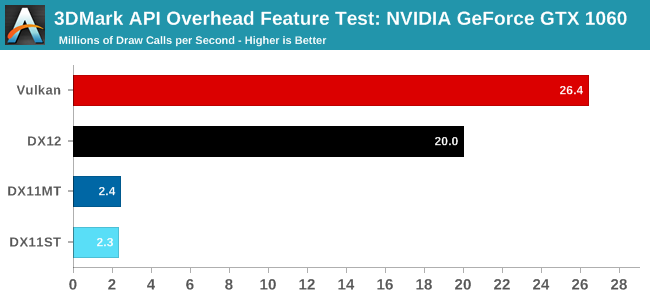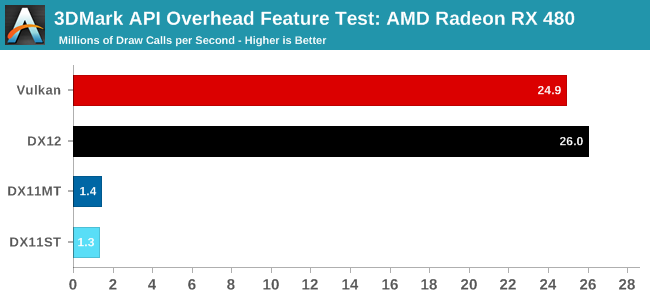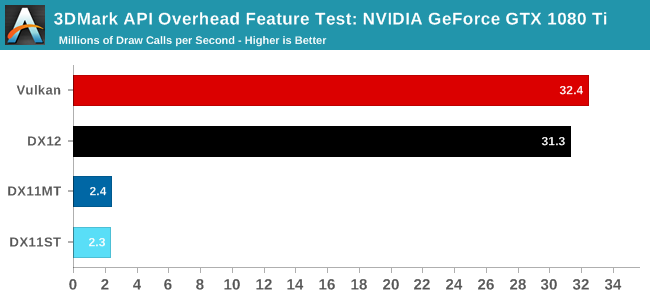The Most Comfortable Gaming Chair? Subscribe! http://bit.ly/SubTechofTomorrow
Cougar Armor Gaming Chair Unboxing and Review (Orange)
http://amzn.to/2liGJbU Try Amazon Prime FREE for 30 Days & Support Tech of Tomorrow! http://amzn.to/12JFYau Don't forget to check out the website!
http://www.techoftomorrow.com Check us out on Facebook!
http://www.facebook.com/TechofTomorrow Stay updated on Twitter!
http://www.twitter.com/techof_tomorrow Tech of Tomorrow Music!
http://www.techoftomorrow.com/music The Benchmark Song: The Human Zoo
– Free on Spotify! http://spoti.fi/10Vz31z
– Amazon: http://amzn.to/12Rh6kI
– iTunes: http://bit.ly/199301I
Categoria: HardwareSoftware
La telemedicina aiuterà presto a risolvere il problema della mortalità materno-infantile in Nepal grazie a un progetto italiano. Sono stato contattato circa un anno fa dal famoso alpinista e amico Hans Kammerlander che, avendo scalato con Messner gli 8000 metri della catena Nepalese e rimanendo sentimentalmente legato a quella meravigliosa e poverissima terra, ha avviato una serie di progetti di scolarizzazione con ottimi risultati.
A seguito dei suoi racconti sulla grave situazione economica, aggravata dai terremoti del 2015, abbiamo cominciato ad affrontare il problema della mortalità materno infantile, che rimane una piaga sociale in Nepal, come in altri paesi meno fortunati, ponendoci come obbiettivo ambizioso quello non solo di affrontarlo ma di trovare una soluzione, anche se parziale in termini geografici. L’idea è stata quella di iniziare con un progetto pilota in una determinata area nepalese, verificarne i risultati ed eventualmente e progressivamente diffonderla.
Il Nepal è il paese più povero dell’Asia Meridionale ed è al 12esimo posto tra quelli più poveri del mondo. Nonostante i progressi compiuti negli ultimi decenni, l’accesso a un’assistenza materna e neonatale di qualità in Nepal era scarso anche prima dei due terremoti del 25 aprile e del 12 maggio 2015.
L’obiettivo del nostro progetto, in linea con il 5° Obiettivo del Millennio, è quello di contribuire al miglioramento della salute materno infantile e all’abbattimento del tasso di mortalità materna al parto. Il progetto si sviluppa mediante una formazione dello staff sanitario locale al fine di renderlo dinamico, motivato, interattivo e capace di depistare precocemente le patologie che possono influenzare il regolare decorso delle gravidanze future. In secondo luogo realizzare un programma di controllo della gravidanza per riuscire a individuare le patologie insorgenti durante la gravidanza, effettuando l’esame diagnostico a domicilio.
È in questo frangente che ha un ruolo fondamentale la telemedicina, con l’impiego di sistemi diagnostici di ultima generazione a costi contenuti, ma estremamente efficaci in queste situazioni estreme, come l’O.T.E. Wireless Probe, una sonda ecografica portatile wireless adatta ad essere trasportata senza ingombri dal personale medico in visita anche in scenari esterni di emergenza. Le sonde sono autoalimentate e trasmettono immagini e dati direttamente su dispositivi portatili quali smartphone e tablet.
Sono poi impiegati l’Ultra Sound Cardiac Output Monitor (USCOM) per il monitoraggio della emodinamica/funzionalità cardiovascolare materna (strumento portatile), un rilevatore di battito cardiaco fetale portatile, un cardiotocografo (da installare nel centro ospedaliero, risultati trasmissibili distanza con screenshot/fotografia del risultato) e un ecografo con ecocolor-Doppler e setting per ecocardiografia materno-fetale (da installare nel centro ospedaliero) con connettività per trasmissione dati su device portatili (smartphone, tablet etc..).
Al fine della buona riuscita del progetto è necessario inoltre implementare un sistema informatizzato al fine di poter seguire e monitorare il sistema di referenza e di contro referenza, tra le strutture di primo e secondo livello.
Un progetto analogo è in discussione con il Ministero degli Esteri anche per la Bolivia. Con il Nepal invece i contatti sono in corso con associazioni ONG.
Cesare Beghi è Cardiochirurgo, Direttore dell’Unità Complessa di Cardiochirurgia all’Ospedale di Circolo Fondazione Macchi di Varese. Direttore della Scuola di Specializzazione aggregata di Cardiochirurgia dell’Università degli Studi dell’Insubria. Si interessa di nuove tecnologie e nuovi materiali applicati in Cardiochirurgia e Medicina in generale. Svolge attività di Cooperazione internazionale in ambito medico-sanitario.

Earlier this week the crew over at Futuremark released a major update to their API Overhead testing tool, which is built into the larger 3DMark testing suite. The API Overhead tool, first rolled out in 2015, is a relatively straightforward test that throws increasingly large number of draw calls at a system to see how many calls a system can sustain. The primary purpose of the tool is to show off the vast improvement in draw call performance afforded by modern, low-level APIs that can efficiently spread their work over multiple threads, as opposed to classic APIs like DirectX 11 which are essentially single-threaded and have a high degree of overhead within that sole thread.
The latest iteration of the API Overhead test, now up to version 1.5, has added support for Vulkan, making it one of the first feature-level benchmarks to add support for the API. Khronos’s take on a low-level API – and a decedent of sorts of Mantle – Vulkan has been available now for just a bit over a year. However outside of a very successful outing with Doom, in the PC ream it has been flying somewhat under the radar, as few other games have (meaningfully) implemented support for the API thus far. By the end of 2017 we should be seeing some wider support for the API, but for the moment it’s still in the process of finding its footing among PC developers.
In any case, like OpenGL versus Direct3D 9/10/11 before it, there’s a lot of curiosity (and arguments) over which API is better. Now that Futuremark is supporting the API for their Overhead test, let’s take a quick look at how the two APIs compare here, and whether one API offers lower overhead than the other.
| CPU: | Intel Core i7-4960X @ 4.2GHz |
| Motherboard: | ASRock Fatal1ty X79 Professional |
| Power Supply: | Corsair AX1200i |
| Hard Disk: | Samsung SSD 840 EVO (750GB) |
| Memory: | G.Skill RipjawZ DDR3-1866 4 x 8GB (9-10-9-26) |
| Case: | NZXT Phantom 630 Windowed Edition |
| Monitor: | Asus PQ321 |
| Video Cards: | NVIDIA GeForce GTX 1080 Ti Founders Edition NVIDIA GeForce GTX 1060 Founders Edition AMD Radeon RX 480 8GB |
| Video Drivers: | NVIDIA Release 378.92 AMD Radeon Software Crimson 17.3.3 |
| OS: | Windows 10 Pro |
As a reminder for the API Overhead test, this is not a cross-system test or even a cross-GPU test. The purpose of the test is solely to measure overhead within a single setup. In practice it’s something of a combined GPU and driver test, as depending on where the bottleneck lies, the limiting factor can be CPU overhead from the driver or just outright hitting the limits of the GPU’s command processor.
The purpose of the test is to compare API performance on a single system. It should not be used to compare component performance across different systems. Specifically, this test should not be used to compare graphics cards, since the benefit of reducing API overhead is greatest in situations where the CPU is the limiting factor.
With that out of the way, let’s start somewhere in the middle of the pack with the GeForce GTX 1060 6GB.

Going into this I was not expecting Vulkan and DX12 overhead to be meaningfully different, so having run the GTX 1060 6GB first, it definitely caught me by surprise that Vulkan’s overhead was so much lower. The net result is that using the Vulkan API, the GTX 1060 can sustain 26.4M draw calls per second, 32% more than DirectX 12. And to be sure, this is consistent across multiple runs.
However before jumping to conclusions, let’s take a look at a couple of other cards.

AMD’s fastest GCN4 card and card most comparable to the GTX 1060 is the Radeon RX 480 8GB. Running the API Overhead test on this card produces something notably different from the GTX 1060. Rather than finding Vulkan well in the lead, we get not quite the inverse: DX12 is holding a small lead at 26M draw calls versus 24.9M draw calls.
The two obvious differences here are the GPU and driver – in other words, the two things that matter the most – and is why cross-GPU results are not directly comparable. However it does go to show that whatever is causing Vulkan to perform better on the GTX 1060 is not a consistent factor. Switching things up can easily put Vulkan performance on the back foot.

Finally, to give the test as much GPU power as possible, I’ve also gone ahead and run it on NVIDIA’s recently released GTX 1080 Ti. This gives us a datapoint where GPU bottlenecking has been reduced as much as possible, and also gives us another datapoint with NVIDIA’s driver set.
The results still put Vulkan in the lead, but not by anywhere near what we saw on the GTX 1060. 32.4M calls versus 31.3M calls is a much narrower 4% difference between the APIs. What this does hint at is that on NVIDIA cards, the Vulkan API path has an edge in overhead, but even within just the NVIDIA ecosystem it’s not a massive difference. As with the AMD RX 480, for the GTX 1080 Ti this is essentially a draw between the two APIs. Which to be fair, is what we’d expect to find.
Overall the latest 3DMark API Overhead benchmark proved both reassuring, and more interesting than I was expecting to find. At a high level, neither Vulkan nor DirectX 12 hold a consistent lead with regards to API overhead, which indicates that both AMD and NVIDIA have done a good job optimizing their drivers and runtimes for this API. And more to the point, no matter the API used, it’s still vastly more efficient than DirectX 11, to the point where the draw call throughput is significantly greater than anything a developer could hope to use in the real world.
However the GTX 1060 results present an interesting anomaly, with the Vulkan API path showcasing noticeably lower overhead. I do have to stress that this is absolutely academic – these low-level feature tests are designed to test one small aspect of a GPU/system, and game performance won’t be anything like this – but it is an unexpected find that hints that Vulkan and DX12 may not be so neck-and-neck at all times on NVIDIA cards. The question we’re left to ponder is whether this is product of NVIDIA’s drivers, or if there’s something at the API level that just maps a bit better to NVIDIA’s command processor…
Autore: AnandTech
Un gruppo di ricercatori dell’Università del New South Wales (UNSW) in Australia ha studiato le onde sonore create dai terremoti stellari
Warface
Bentornati nella rubrica di Tom’s Hardware che vi propone una piccola lista dedicata ai migliori giochi gratis disponibili su PC e console. In questa puntata vi presentiamo: Warface, Shadowverse e Strife.

